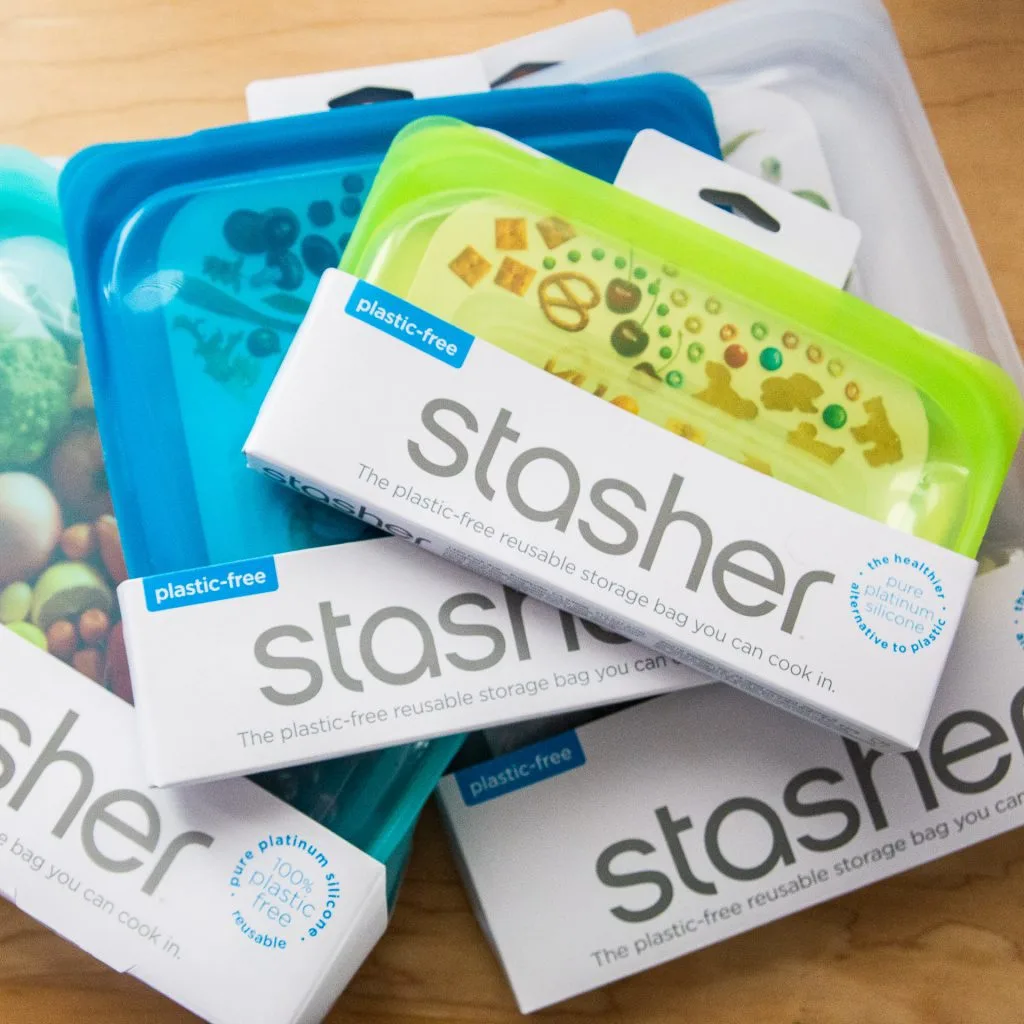The Best Deals on Camping, Backpacking and Outdoor Gear [June 2025]
Plastic bags are a scourge on the environment. Often considered a necessary evil, they take 500 years to break down, are difficult to recycle, and often end up in a landfill or our waterways (or on the side of the road or under a bus bench or stuck in the tree in your front yard…). According to Waste Management, 100,000 marine animals die each year because of plastic bags. For the love of our environment, it’s time to ditch plastic zip-top bags, including those zip-top plastic bags, and get some reusable stasher bags for backpacking.
It took us a while to take the leap to silicone. They were just so much more expensive than plastic zip-top bags. (Although they’re less expensive than buying a half-dozen boxes of single-use plastic bags a year.) But we kept putting it off because we used zip-top bags sporadically at best and reused them if at all possible. To the point that when we were dating, Josh thought I had lost my mind because he had never seen someone wash and reuse what he thought was intended to be a single-use device. But it’s what my mom had always done (although she probably did it more to save money than I did to save on waste), so I did it, too.
We even cooked in plastic zip-top bags. Only when backpacking, and even those bags I would take home, wash and re-use if they weren’t so smelly and slimy I was certain they were tainted forever. But we’d pour boiling water into individual plastic zip-top bags that contained our uncooked dinner, then eat right out of them. I know, gross, right? That had to be unhealthy. But it meant no dishes or soap required on the trail and a savings in fuel because we didn’t have to cook noodles over our backpacking stove for a lengthy period of time. So we kept doing it.

Until! We got our hands on some Stasher Bags. These things are legit. You can boil them, pour boiling water into them, microwave them, put them in the dishwasher, freeze them, you name it. The seal at the top is watertight so you don’t have to worry about spills or contents getting soggy in the rain and because they’re made from the highest grade silicone, they’ll last for years.
We stashed trail snacks in them, traveled with them, froze them, cooked sous-vide style with them, and yes, used them for freezer bag cooking, all with splendid results (and no BPA was ingested or sea turtles endangered as a result).
Heads-up, though, they are heavier than plastic zip-top bags, so ultralight backpackers may not want to pack individual meals in 6 different Stasher bags, but they’re awesome for snacks on day hikes, keeping important stuff dry, and cooking your dinner in that skunky hostel kitchen in Vienna (who cleaned that pot last?!).
Check out our full review in the above video. You just might learn something. At the very least, it should result in a hearty guffaw.
So get yourself som Stasher bags for backpacking (here) and wander on!
*This post contains affiliate links. That means if you buy some Stasher bags after clicking on a link in this post you’ll not only help some sea turtles but your favorite sustainable outdoor adventure bloggers, too!
•
High-quality silicone.
Absolutely. While they may cost more at the outset, they are far more durable, can be reused hundreds, if not thousands of times without degrading, and help remove single-use plastic from landfills and waterways where they take 500 years to break down and kill an estimated 100,000 marine animals annually.
Yes.
Yes.
Yes to both.
Yes. You can wash and reuse them for years.
We wouldn’t recommend it. It might upset her tummy.
